FB/EK Holden: Buyers Guide
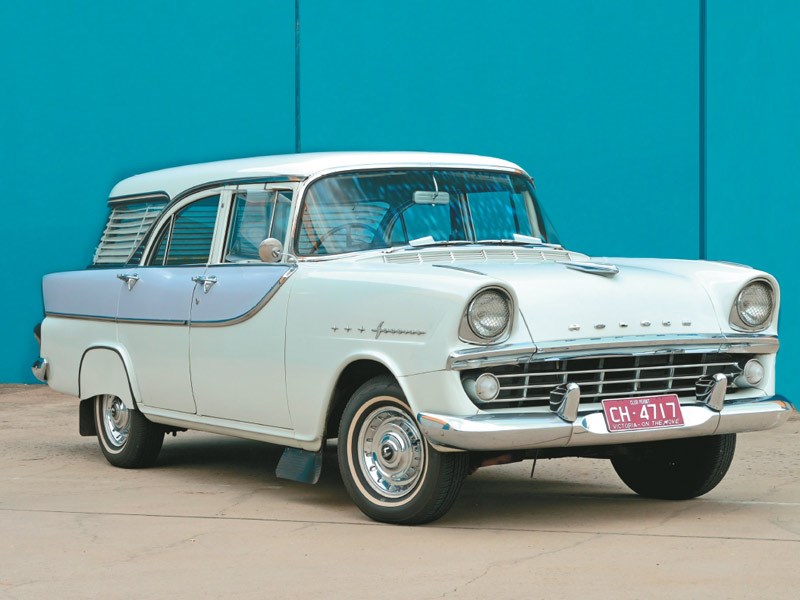 FB/EK Holden
FB/EK Holden

 FB/EK Holden
FB/EK Holden

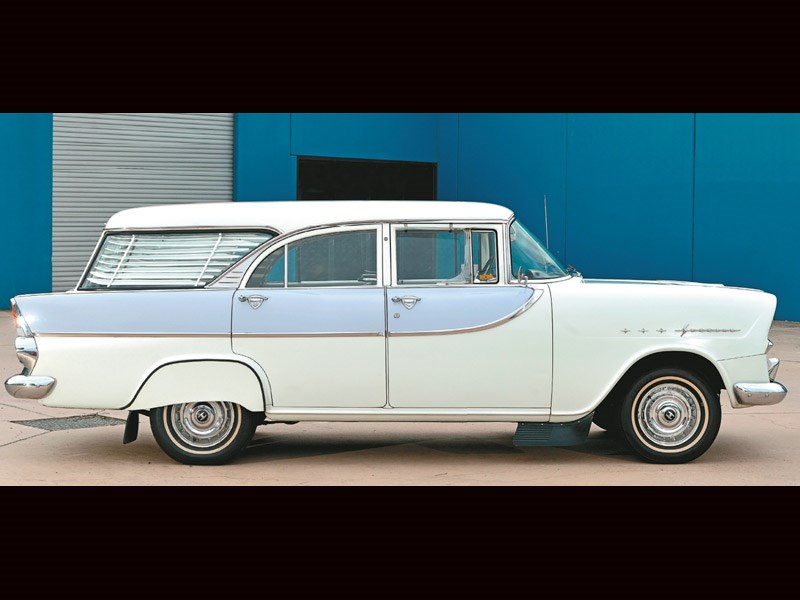 FB/EK Holden
FB/EK Holden

 FB/EK Holden
FB/EK Holden
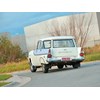
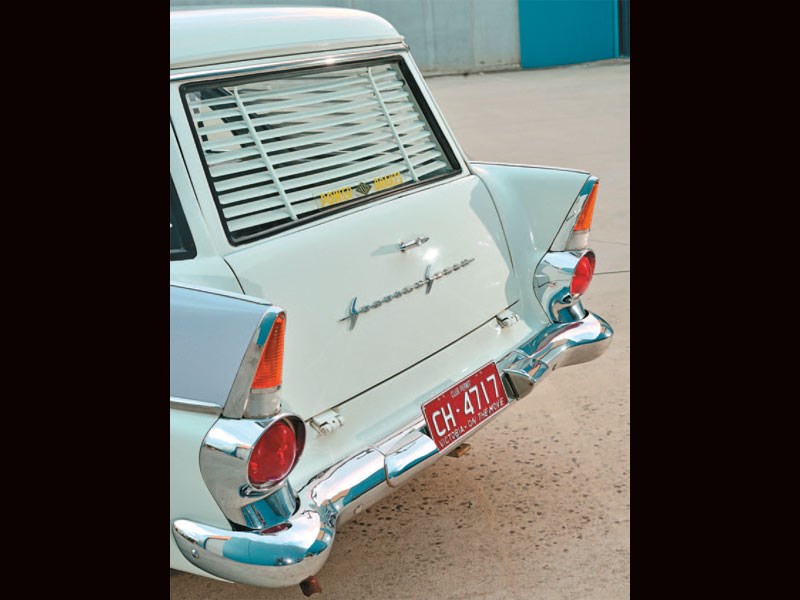 FB/EK Holden
FB/EK Holden

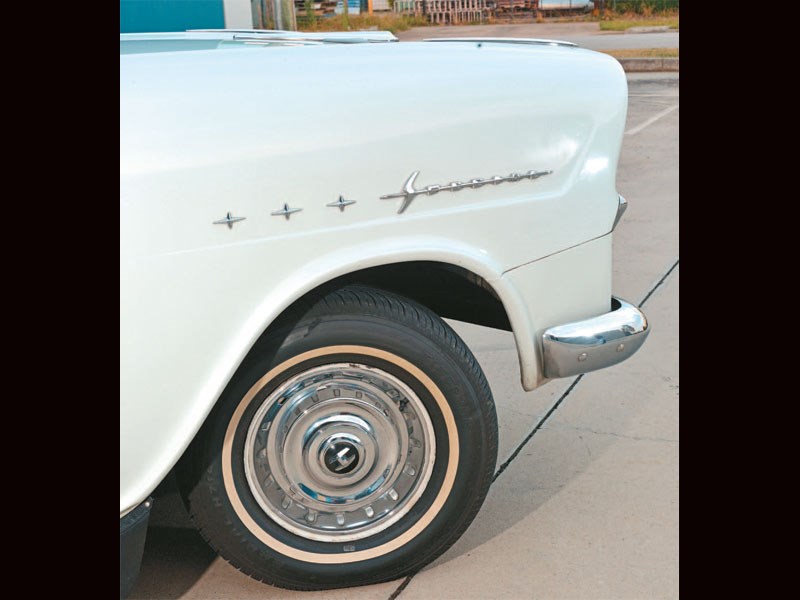 FB/EK Holden
FB/EK Holden

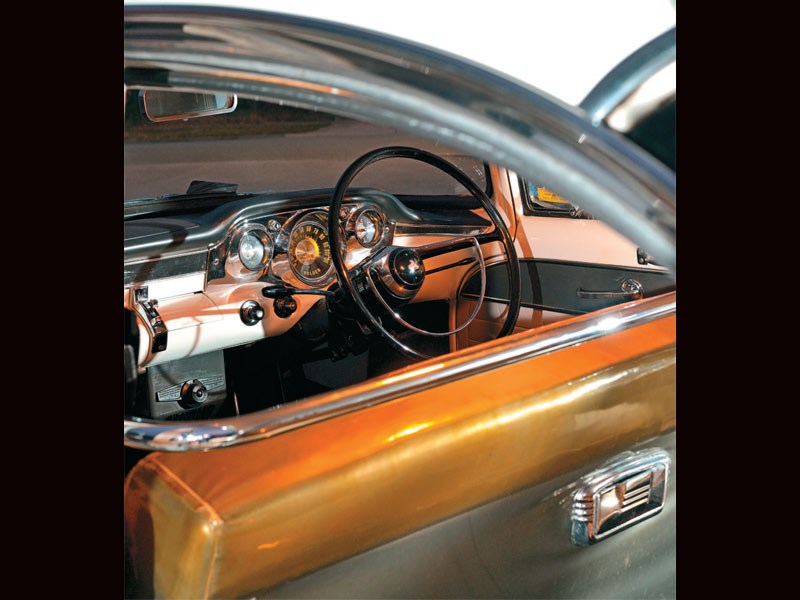 FB/EK Holden
FB/EK Holden

 FB/EK Holden
FB/EK Holden
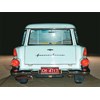
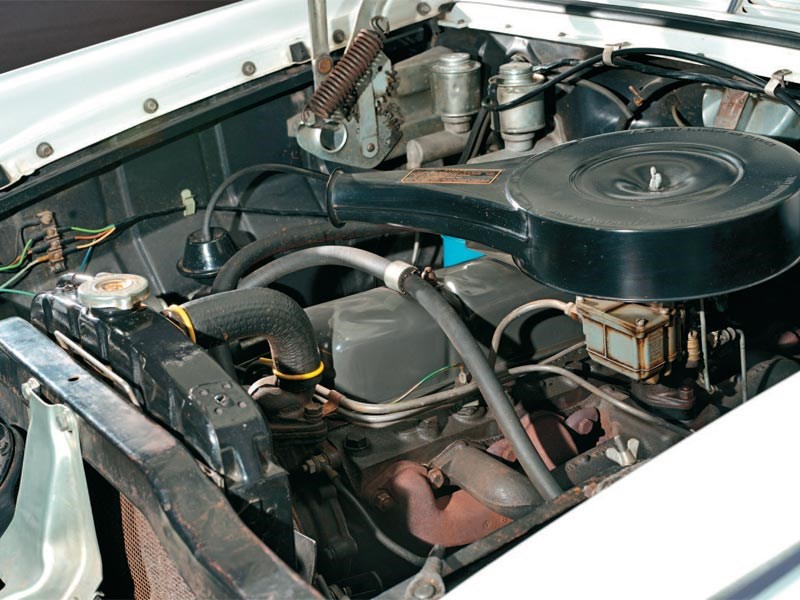 FB/EK Holden
FB/EK Holden

 FB/EK Holden
FB/EK Holden


|
|
FB/EK Holden
|

|
|
FB/EK Holden
|

|
|
FB/EK Holden
|

|
|
FB/EK Holden
|

|
|
FB/EK Holden
|

|
|
FB/EK Holden
|

|
|
FB/EK Holden
|

|
|
FB/EK Holden
|

|
|
FB/EK Holden
|

|
|
FB/EK Holden
|
Before the end of charismatic fins and stainless-steel trim, this iconic Australian convincingly justified its sales success...

|
|
Buyer's Guide: FB/EK Holden
|
Buyer's Guide: FB/EK Holden
From the day in November 1948 that saw ‘Australia’s Own’ car unleashed, Holden styling was destined to reflect automotive shapes that were years out of date. But the buyers just didn’t care.
By the summer of 1960 when its finned FB model arrived, Holden controlled 47 percent of the Australian car market and was building a strong export presence. Not even the sleek shape of Ford’s new Falcon was able to overwhelm Holden’s dominance or reputation for durability.
Restyling and improving the Holden reportedly cost $15 million, but beyond the heavily-finned shape and curved glass, it was hard to see where so much money might have been spent.
The passenger range consisted of Standard and Special models – sedans and Station Sedans all sharing the same suspension, braking system and engine. The Special came with a cigarette lighter, two-tone seats and extra stainless-steel trim. There was a shorter steering column and dished wheel but other safety-related items like the heater/demister remained optional.
Without lengthening the wheelbase, Holden added 140mm to FB’s overall length – most of that devoted to fins and attentionseeking headlamp shrouds. Commercial models adopted the FB’s new front sheet metal but kept the same rear lights as the superseded FC. Panel vans featured a long-awaited height increase.
Engine design was unchanged but a capacity increase from 2.2 to 2.3 litres, and increased compression ratio, boosted power from 52kW to 56. Torque output increased marginally but still peaked at just 1400rpm.
Initial FB sales exceeded even the numbers set by the much-admired EH. Early cars rolled out of showrooms at a rate of 20,000 units a month and within 15 months 175,000 had been made.
On 2 May, 1961, the EK update debuted in a market afflicted by a ‘credit squeeze’ that savaged new vehicle sales. Most obvious among the EK’s changes was the deletion of the big spear of stainless steel that characterised FB Specials, and an expanded range of colour combinations.
An extensive accessories list allowed buyers to upgrade and personalise their Holden with extras including a radio, weather-shield and mudflaps. Tony Galea’s FB Station Sedan proudly displays around 30 genuine Nasco accessories but there are others that even his car doesn’t have. However the most exclusive attribute of the EK was a badge on the boot denoting the car as a ‘Hydra-Matic’.
Holden had come late to the automatic transmission party but was determined to compensate for its time on the sidelines. Automatic Holdens were heavily promoted to female drivers and business users who spent long hours in city traffic. Even a few cab owners began adopting the less-fatiguing ‘slush-box’.
Improvements to the EK design included new vinyl for the seats and electric windscreen wipers replacing a vacuum system that was lethargic when needed most. A larger intake helped improve ventilation and a new grille enhanced the width of the Holden – a selling point against Ford’s modern, but scrawny-looking Falcon.
Luxury with a Holden badge was still a model change away but an EK-based forerunner to the EJ Premier was built for the company’s managing director, complete with gold metallic paint, power steering and unique striped seats.
ON THE ROAD
Jump from a modern, ABS-braked 200kW ‘family’ car into a 53-year-old Holden and the culture shock is bound to be daunting. But judged against the standards of the day, FB/EK Holdens provide pretty convincing justification for their sales success.
These cars will genuinely seat six adults and still keep up with the traffic in most suburban situations. Without any form of assistance, the steering and brakes are reasonably light and work well.
In pursuit of a smooth and more compliant ride, Holden fitted additional rubber suspension bushings – a move that some testers thought had robbed the steering of its sharpness.
Tyres, of course, were skinny cross-plys and the one thing that a Holden enthusiast can do to improve response and cornering prowess is to fit a set of slightly wider rims and radial tyres. Yes, the ride quality will suffer but radial-shod cars are decidedly easier and less life-threatening to drive.
The ‘grey’ engine was well overdue for replacement but still delivered slogging low-end torque that helped mask the manual cars’ absence of first-gear synchromesh. You could trundle down to 15km/h in second then floor the throttle and it would increase speed slowly but without protest.
Second gear ran to almost 100km/h, making for reasonably rapid overtaking. This was in an era when vehicles typically travelled on the highway at 80-90km/h and most trucks were restricted to 70km/h. EKs with a three-speed Hydra-Matic transmission were sluggish in hilly or twisty terrain but appealed to city-bound buyers who appreciated the auto’s ease of use in heavy traffic.
Electric wipers arrived with the EK but FB drivers still had to deal with downpours behind pitifully slow, vacuum-operated blades. Both cars left large chunks of curved windscreen uncleared and a lot didn’t come with the optional heater/demister. Holdens of this age were often found with a towel tucked under the seat.
With 60kg more weight than an FC and pretty ordinary aerodynamics, performance figures run by the FB and EK were disappointing. The highest top speed magazine testers could encourage from an FB manual was 132km/h, whereas the lighter FC was 6km/h faster.
Sprinting to 60mph (97km/h) in a manual FB occupied 20.8sec, however an EK automatic took an excruciating 29.2sec and could manage just 122km/h flat out.
Renowned for their ability to suck exhaust fumes through a propped-open rear window, a wagon (proper terminology Station Sedan) or panel van is the go if you’re into load-space. FBs were the first Holden vans with increased roof height in the load area and had space in the back for a three-quarter mattress – so I’m told.
BUYING
More than 320,000 of the big-fin Holdens were built, so the numbers that survive come as no surprise. What will produce some shock is the money being asked and occasionally realised for excellent cars.
A couple of decades ago, the price of a decent FB/EK was less than $3000 and the best cars cost no more than $10,000. In the recent market, however, those selling for under $10,000 frequently need some work and display-quality cars have reached $30,000.
"I like the station wagons because they’re harder to find than sedans and a bit more practical," FB owner Tony Galea says. "People also look for panel vans that haven’t had windows put into the body sides. Standard models are worth looking for, too, because there aren’t as many around as the Specials."
Joining a club that caters to early-modern Holdens or visiting one of these clubs’ display days is the best way to get close to good quality FB/EKs and perhaps purchase one.
Modified cars are reasonably common and it’s fair to say that a later ‘red’ motor in place of the ‘grey’, a four-speed gearbox, disc brakes and bigger wheels make an FB/ EK a comfortable cruiser and competent commuter. Mildly altered cars cost no more than standard versions.
BUYER'S CHECKLIST:
Body & Chassis
Rust, concealed or otherwise, can pop up almost everywhere. Start at the wheelarches, feeling under the edge for filler or bubbling, then the sills, lower door skins and mudguards, firewall and sub-frame, floors and the turret. It is now almost impossible to find good used sub-frames and some panels – including mudguards – are difficult. Tailgate rust is common in wagons and commercial models so listen for creaks and crackling from the hinge boxes. Check the spare wheel compartment as well. Floorpan, door skin and sill repair panels are available from several suppliers and not expensive. New lenses are available, but good brightwork is scarce and expensive.
Engine & Gearbox
Although discontinued 50 years ago, ‘grey’ Holden engines and parts can be found and are usually not expensive. Converting the FB/EK to a later Holden engine type isn’t hard so there’s no reason for these cars not to remain running for decades to come. Typical problems include piston and crankshaft knocks, oil leaks from the main bearing seal, fuel leaks and cracked exhaust manifolds. The manual gearbox suffers bearing noise, synchro and selector problems, but replacements are easily located. Hydra-Matics can be rebuilt. Check the differential for pinion noise (especially in
reverse) and oil leaks.
Suspension & Brakes
Wear of any kind in the front end will heighten these cars’ indifferent steering response and stability. Look first for uneven tyre wear and creaking when the wheel is turned at low speed. Soft shock absorbers will allow the car to bounce alarmingly and must be changed. Rear leaves flatten and crack with age and u-bolts should be checked for correct alignment and thread damage. Some cars have been converted using disc front ends from later models but the original drums, provided they are in good condition, are satisfactory. Use gentle pressure on the pedal while driving to feel for ovoid drums and firm, constant pressure when stationary to detect hydraulic leaks.
Interior & Electrics
Obtaining vinyl that closely matches the original has become difficult and some owners scour US suppliers for close facsimiles. Replacement door trims can be found for around $400 per set; rubber kits and mats are available. Handles and switches can be found at swap meets but it takes patience to track down rare accessories. If an FB is to be used semi-regularly, upgrading to electric wipers is worthwhile.
I OWN ONE...
Having spent his earliest years passengering in an FB sedan that his dad still owns, there was little chance that Tony Galea wouldn’t harbour a soft spot for early Holdens.
His own first car was an HR wagon and the collection has grown over more than 20 years to include EKs, a very rare and part-restored FE station wagon and this super-authentic FB with its astonishing array of genuine Nasco accessories.
"A friend owned the car and restored it with me," Tony says. "Sadly he passed away and I helped dispose of his cars and stocks of parts but I made an offer on the FB for myself."
Almost every aspect of the car, from chrome and paint to mechanical components, is factory original and that’s not surprising. When Tony acquired the car 20 years ago it had done 34,000 miles (61,000 now), which equates to an average slightly more than 1000 miles (1611 kilometres) a year since new.
"I’ve changed the clutch as the plate was just getting too old and I think at some stage a couple of the guards have had some paint but apart from those, seat belts which my friend fitted and extra accessories, it’s original," Tony emphasises. "There are lots of restored cars but people love seeing just how they were 50 and more years ago."
SPECIFICATIONS
Holden FB-EK (1960-62)
Number made: 174,747 (FB), 150,214 (EK)
Body styles: all-steel, unitary construction four-door sedan and station wagon, two-door utility and panel van
Engine: 2262cc 6cyl, OHV, 12v, single downdraft carburettor
Power: 56kW @ 4000rpm
Torque: 162Nm @ 1400rpm
Performance: 0-97km/h – 20.4 seconds, 0-400m – 22.0 seconds*
Gearbox: 3-speed manual or 3-speed automatic
suspension: independent with upper and lower control arms, coil springs, anti-roll bar and telescopic shock absorbers (f); live axle with semi-elliptic springs and telescopic shock absorbers (r)
Brakes: drums (f/r)
Tyres: 6.40 x 13 cross-ply
Price range: $2500 – 25,000
Contact: early Holden clubs in all states www.fbekholden.com
*FB manual
*****
More reviews:
> Holden FB Ute (1961) review here
> Holden EK (1962) review here
Unique Cars magazine Value Guides
Sell your car for free right here
Get your monthly fix of news, reviews and stories on the greatest cars and minds in the automotive world.
Subscribe

.jpg)














